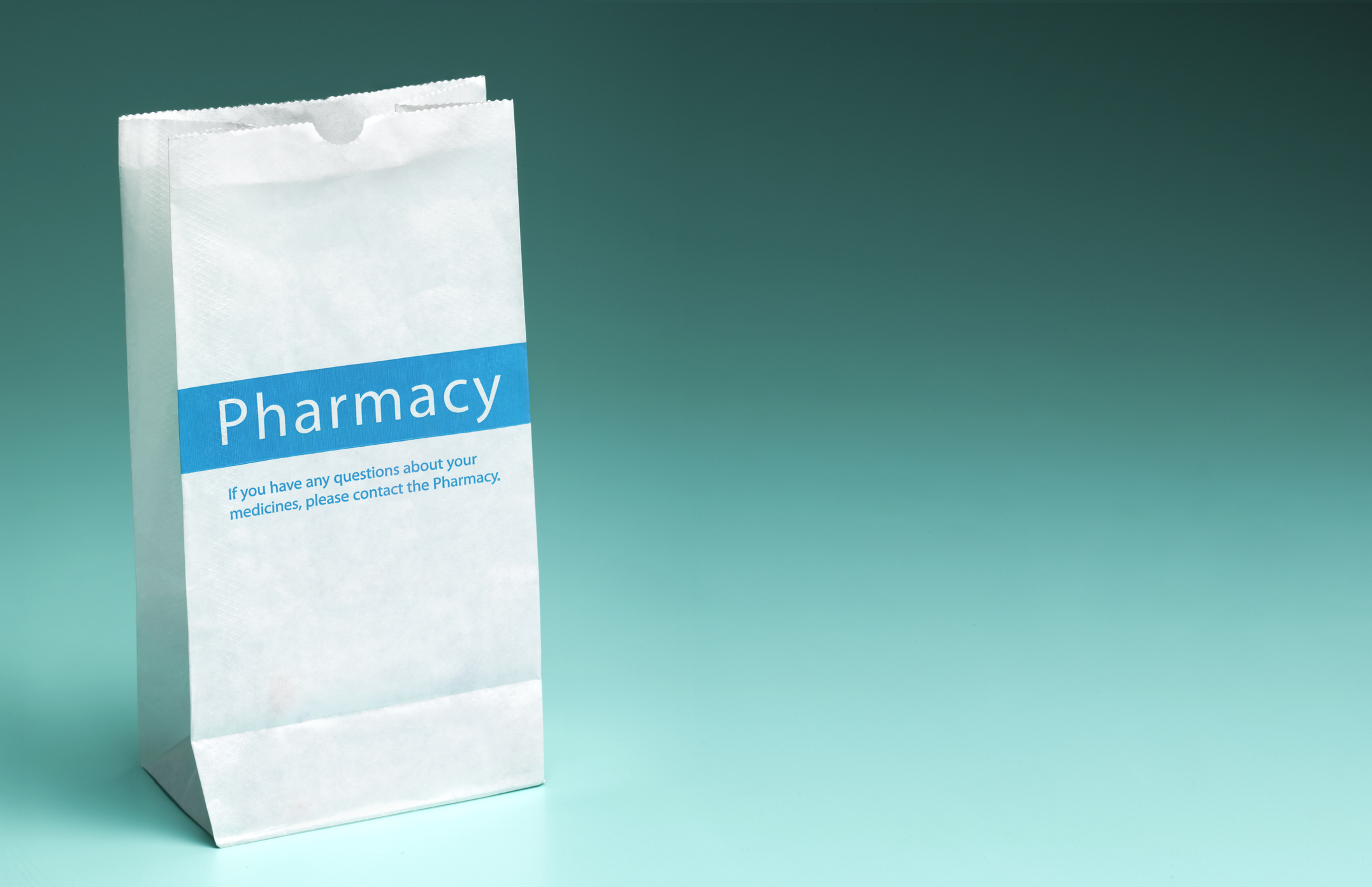16 Strategies to Save Money on Prescription Drugs
Many Medicare recipients are benefiting from changes that make prescriptions more affordable. But you can still make other moves to keep your costs in check.


Prescription drug costs have risen significantly over the past several years.
Among drugs that went up in price from January 2022 to January 2023, the average increase was 15.2%, and it was 11.5% the previous year, according to the most recent data available from the U.S. Department of Health and Human Services.
A Commonwealth Fund study found that 14% of Medicare beneficiaries didn’t fill a prescription or skipped a dose of their medication because of the cost.
From just $107.88 $24.99 for Kiplinger Personal Finance
Become a smarter, better informed investor. Subscribe from just $107.88 $24.99, plus get up to 4 Special Issues

Sign up for Kiplinger’s Free Newsletters
Profit and prosper with the best of expert advice on investing, taxes, retirement, personal finance and more - straight to your e-mail.
Profit and prosper with the best of expert advice - straight to your e-mail.
“The inability to afford the prescription you need could have long-term implications on your health outcomes,” says Gretchen Jacobson, vice president of Medicare for the Commonwealth Fund.
But the past few years have also brought changes that should make prescription drugs more affordable for many people with Medicare Part D or Medicare Advantage plans.
The Inflation Reduction Act of 2022 limited co-payments for covered insulin to $35 per month, eliminated cost sharing for adult vaccines covered by Part D, expanded the Extra Help program (which assists with premiums and co-payments for low-income Medicare beneficiaries), and gave the government the go-ahead to start negotiating prices with drug companies.
The dreaded “doughnut hole” — which originally required beneficiaries to pay 100% of their drug costs after costs reached a certain level — has disappeared. Instead, your out-of-pocket costs for covered drugs are capped at $2,000 per year, starting in 2025.
“It’s a lot easier to navigate and predict your Part D costs now,” says Caitlin Donovan, senior director of the Patient Advocate Foundation, a nonprofit that provides free case management and financial assistance to people who are diagnosed with serious medical conditions.
But you may still encounter surprises.
Only drugs covered by the plan’s formulary are subject to the cap, and plans have been changing their lists of covered drugs. Drug plans have also been adding restrictions to coverage, such as prior authorization and step therapy, which require you to jump through hoops before they’ll cover your medication. And some of the expenses you’ll have to pay before you reach the cap are going up.
The maximum deductible for Part D plans increased to $590 in 2025, and you may have to pay a larger percentage of drug costs after you reach your deductible, especially for specialty medications. Premiums, which aren’t included in the cap, also increased for many Part D plans in 2025.
For that reason, it’s still important to do some work to save money on prescription drugs. But because of these changes, the strategies are different from what they’ve been in the past. Here’s what you need to know.
THE $2,000 CAP
The $2,000 out-of-pocket cap is a game-changer for people who have high drug costs. HHS projects that about 11.3 million Part D enrollees will meet the cap in 2025. They won’t have to pay anything for covered drugs after that point.
But the new rule has some limitations, says Juliette Cubanski, deputy director of KFF’s program on Medicare. Significantly, the $2,000 cap applies only when you’re using your plan and only to drugs that the plan covers, she says.
That changes some cost-saving strategies. For example, in the past, if your Part D plan charged high co-payments for your medications, it made sense to search sites such as GoodRx.com for coupons that could reduce the cost of a drug to less than your insurance co-pay. In that case, you could save money by using cash with a coupon rather than your insurance.
But the equation is different with the new cap. Now, if you expect your drug expenses to come close to the $2,000 threshold during the year, it can pay to use your insurance — even if the insurance co-payments are slightly higher— so the expenses can count toward the cap.
“You have to make a prediction about your medications and the out-of-pocket costs,” says Cindy George, senior personal finance editor at GoodRx. “Is it better to stick with the plan, get credit for the out-of-pocket costs and get to the point where it pays 100% for your medications?”
Take advantage of the smoothing program
Although the $2,000 cap helps, beneficiaries may have a tough time paying their out-of-pocket drug costs if they have to cover them all at once. For example, people with cancer frequently have a lot of prescription drugs and other expenses and may hit the cap in January, says Robin Yabroff, scientific vice president for the American Cancer Society.
For those individuals, the new Medicare Prescription Payment Plan can divide drug costs into smaller monthly payments, says Elizabeth McCauley, helpline navigator at Susan G. Komen, which focuses on breast cancer research and advocacy.
You don’t have to pay extra for the smoothing program, and it doesn’t reduce your costs — it just spreads them out over the year to ease the load on your budget. You can sign up for the program through your drug plan at any time. For more information, see www.medicare.gov/prescription-payment-plan.
NON-COVERED DRUGS
Because the $2,000 cap applies only to drugs included in your plan’s formulary, it is essential to find out whether your drugs are covered as you choose a plan, says Cubanski. Plans frequently change their formularies, so you might lose coverage for a medication that your plan once covered, she says.
You can shop for Part D and Medicare Advantage plans during Medicare’s annual open enrollment, which runs from October 15 to December 7, for new coverage starting January 1. Type your drugs and dosages into the Medicare Plan Finder, or log in to your online Medicare account to find out which plans in your area cover your medications and how much you’d pay.
You could lose out on other benefits if your drug isn’t covered. For example, the Inflation Reduction Act capped insulin costs at $35 per month, but only for insulins covered by your Part D or Medicare Advantage plan. Not all plans cover all types of insulin, and the plans’ coverage can change, so it is important to check the formulary before choosing a plan, says Diane Omdahl, cofounder of 65 Incorporated, a company that helps people with Medicare decisions.
It can be tricky if you’re prescribed a new medication midyear that isn’t included in your plan’s formulary. Before you leave the doctor’s office, Omdahl recommends using the Medicare Plan Finder to check your plan’s coverage. If your insurance doesn’t cover the drug or has high co-payments, ask your doctor or medication prescriber whether there are other drugs that can meet a similar need, such as a low-cost generic or a therapeutic alternative that costs less under your plan. Specialists prescribing expensive medications generally have resources to help patients navigate the costs.
For cancer patients, for example, “we recommend talking with the oncology care team about other options,” says Yabroff. “If people can’t afford a specific treatment, there may be an alternative to the recommended treatment that is just as effective but may be less expensive.”
Your pharmacist may also be able to help. “Patients can ask their pharmacist for a savings review at any time,” says Monica Prinzing, a CVS Health spokesperson. “CVS pharmacists can review a patient’s prescription regimen and help patients work with their doctor to determine potential alternatives.”
Appealing if you can’t switch drugs
If another drug can’t fill the same need, your prescriber may request a formulary exception, particularly if the doctor says that only a single drug that will work for you, Cubanski says.
You may have additional recourse if your plan stops covering your medication. “Often prescribers can request an appeal based on continuity of care for the patient to allow the non-formulary alternative,” says McCauley. In some cases, insurers may uphold their decision to deny the drug unless a patient tries the formulary alternative, she says. In that case, patients may need to change their medication briefly to see whether they have an adverse reaction to the one the plan prefers, she adds.
You may be able to change to a different Part D or Medicare Advantage plan that covers your drug even if open enrollment has passed. You can switch into a plan with a five-star quality rating at any time if one is available in your area. Type your zip code into the Plan Finder to check the plans’ ratings.
If you already have a Medicare Advantage plan, from January 1 to March 31 each year you can switch Advantage plans or change from Medicare Advantage to original Medicare and get a Part D plan. However, depending on your state, you may not be able to get a medigap policy to supplement original Medicare if you have preexisting conditions.
Dealing with coverage restrictions
Just because a drug is listed on your plan’s formulary doesn’t mean you’ll automatically be covered. More plans are adding restrictions. With prior authorization, your doctor needs to submit information explaining why you need a specific medication. With step therapy, you may need to try a lower-cost drug first before the plan will cover the more expensive medication.
About 30% of drugs that are covered on a formulary have a prior authorization requirement, according to a 2024 MedPAC analysis. It’s more likely to be required for higher-cost medications, Cubanski says. But that doesn’t mean you should take no for an answer, she adds, because the initial denial is often overturned on appeal.
McCauley says that oncology offices have plenty of experience with the process because in specialized care such as oncology, the majority of procedures and treatments are subject to insurance prior authorization.
In most cases, the provider’s office will have staff dedicated to processing prior authorizations, which takes the responsibility and pressure off the patient, she says. “The process can be very fast,” McCauley adds — the staff can usually obtain authorizations immediately via online portals or via fax within a few days.
The provider’s office can also handle an appeal. “They will have access to the most medically up-to-date supporting information, increasing the chances of overturning the denial,” McCauley says.
OTHER WAYS TO SAVE
If your drug isn’t covered, or if you have high out-of-pocket expenses, you may qualify for programs to help with the costs.
Disease-specific funds
Nonprofits such as the Patient Advocate Foundation and the PAN Foundation have funds to help with a variety of expenses, including drug costs. “You apply based on your diagnosis, not your prescription,” says Donovan. Your doctor must provide verification of the disease, and you may need to meet income requirements, which can be as high as 400% to 500% of the federal poverty level.
For example, the Patient Advocate Foundation has a cervical-cancer fund that provides up to $2,000 to help pay deductibles, co-payments and other expenses for eligible patients earning up to 500% of the federal poverty level. Some of the foundation’s funds, such as its diabetes fund, have had so many applicants that they filled up and closed quickly, she says. You can sign up for alerts when new funds open for your condition.
State pharmaceutical assistance programs
These programs help people who have low incomes or specific diseases with out-of-pocket drug costs; you can use the Medicare website to find out whether your state has a program. You can also learn about programs in your area by contacting your State Health Insurance Assistance Program.
Pharmaceutical assistance programs offered by drug companies
Like state programs, these programs from pharmaceutical companies can help with out-of-pocket costs. (However, some of these programs are not available to Medicare beneficiaries.) For more, see the Medicare website.
Extra Help
This Medicare program assists low-income beneficiaries with premiums and co-payments for Part D plans. The Inflation Reduction Act expanded eligibility starting in 2024.
You can also use these strategies to help reduce your expenses.
Find a lower-cost pharmacy
The pharmacy you choose can make a big difference in how much you pay for drugs. Part D plans typically have three cost tiers: preferred pharmacies, other in-network pharmacies and out-of-network pharmacies.
The Plan Finder can show your plan’s costs for local and mail-order pharmacies. If you and your spouse have different Part D plans, you may have different preferred pharmacies.
Use tax-free HSA money
Even though you can’t make new contributions to a health savings account after you enroll in Medicare, you can withdraw money you’ve accumulated in the account tax-free for eligible medical expenses at any time — including health and drug deductibles, co-payments, over-the-counter drugs, and prescription drugs that aren’t covered by your plan.
“Anything that is prescribed by a doctor can be paid for with an HSA, whether or not your insurance covers it,” says Karen Volo, head of health and benefit accounts for Fidelity Investments. For example, if your drug plan doesn’t cover GLP-1 drugs, which aid with diabetes and weight loss, you can still withdraw money tax-free from an HSA for it as long as the medication was prescribed, she says.
After you turn 65, you can also withdraw HSA money tax-free to pay Medicare premiums, including those for Part B, Part D and Medicare Advantage plans (but not premiums for medigap policies).
PRE-MEDICARE RETIREES
If you retire before age 65 and have health coverage from an Affordable Care Act marketplace plan or employer retiree plan, the strategies for saving money on prescription drugs can be different. These plans aren’t required to cap out-of-pocket spending at $2,000, so you may still benefit by using cash and a coupon if it costs less than your insurance co-payment.
You may also be eligible for assistance programs that aren’t available to Medicare beneficiaries. “Co-pay cards, manufacturer coupons and vouchers from pharmacy benefit managers are available only to individuals who use commercial insurance,” says McCauley.
These programs can give patients a discount after insurance pays a portion of their claim, but the programs are not available to people with Medicare and other government plans. Find out more at GoodRx.com, or contact the drug manufacturer.
WEIGHT-LOSS DRUGS
GLP-1 drugs were originally used to treat type 2 diabetes, but they’ve become popular for weight loss, too. These drugs, such a Ozempic, Wegovy and Mounjaro, may cost more than $1,000 per month for an indefinite period, so it’s essential to find out how your insurance covers them before getting started.
Coverage varies significantly. Employer plans may charge a range of co-payments, and some have been pulling back on coverage. Medicare Part D and Medicare Advantage plans are not allowed to cover drugs prescribed solely for weight loss, although they’ve been expanding coverage as the Food and Drug Administration approves use of the drugs for other conditions.
For example, most Part D plans cover Ozempic to treat type 2 diabetes, and Wegovy can now be covered for people with heart disease who are also overweight. Zepbound is now FDA-approved for eligible patients with obstructive sleep apnea. But coverage requirements are very specific.
To get coverage for Wegovy, for example, cardiac patients must meet certain criteria, including a prior heart attack or stroke or peripheral arterial disease, and they must first have maximized their options with medical therapies such as beta blockers, says Shauna Levy, a physician and medical director of the Tulane Weight Loss Center.
People who aren’t on Medicare can get help from drug manufacturers’ assistance programs, but some have monthly co-pays of $400 to $600.
Because of this patchwork of coverage and costs, Levy’s office has a dedicated staff member to contact each patient’s insurance company to find out about their coverage before they come in for an appointment.
“I could have a heartfelt conversation with a patient to understand why a medication will improve their health but then find out that their plan excludes the obesity coverage, and they’re devastated. That’s why we want to know up front,” she says.
Levy recommends getting guidance on your options from a weight loss specialist who has experience with these medical and financial issues.
Note: This item first appeared in Kiplinger Personal Finance Magazine, a monthly, trustworthy source of advice and guidance. Subscribe to help you make more money and keep more of the money you make here.
Related Content
Profit and prosper with the best of Kiplinger's advice on investing, taxes, retirement, personal finance and much more. Delivered daily. Enter your email in the box and click Sign Me Up.

As the "Ask Kim" columnist for Kiplinger's Personal Finance, Lankford receives hundreds of personal finance questions from readers every month. She is the author of Rescue Your Financial Life (McGraw-Hill, 2003), The Insurance Maze: How You Can Save Money on Insurance -- and Still Get the Coverage You Need (Kaplan, 2006), Kiplinger's Ask Kim for Money Smart Solutions (Kaplan, 2007) and The Kiplinger/BBB Personal Finance Guide for Military Families. She is frequently featured as a financial expert on television and radio, including NBC's Today Show, CNN, CNBC and National Public Radio.
-
 The SEC Is Concerned for Older Investors and Retirement Savers. Here's What You Should Know
The SEC Is Concerned for Older Investors and Retirement Savers. Here's What You Should KnowThe SEC focusing on older investors, retirement and college savers, and private securities. Here's how those changes impact you.
-
 Vesting, Catch-Ups and Roths: The 401(k) Knowledge Quiz
Vesting, Catch-Ups and Roths: The 401(k) Knowledge QuizQuiz Test your understanding of key 401(k) concepts with our quick quiz.
-
 Why You Should Pay Attention to Company Guidance
Why You Should Pay Attention to Company GuidanceUnderstanding how corporate profit forecasts affect analysts’ estimates and stock ratings can help you make investment decisions.
-
 Vesting, Catch-Ups and Roths: The 401(k) Knowledge Quiz
Vesting, Catch-Ups and Roths: The 401(k) Knowledge QuizQuiz Test your understanding of key 401(k) concepts with our quick quiz.
-
 How to Protect Yourself and Others From a Troubled Adult Child: A Lesson from Real Life
How to Protect Yourself and Others From a Troubled Adult Child: A Lesson from Real LifeThis case of a violent adult son whose parents are in denial is an example of the extreme risks some parents face if they neglect essential safety precautions.
-
 The 2026 Retirement Catch-Up Curveball: What High Earners Over 50 Need to Know Now
The 2026 Retirement Catch-Up Curveball: What High Earners Over 50 Need to Know NowUnlock the secrets of the 2026 retirement catch-up provisions: A must-read for high earners aged 50 and above.
-
 Here's How Much You Can Earn with a $100,000 Jumbo CD
Here's How Much You Can Earn with a $100,000 Jumbo CDYou might be surprised at how fast a jumbo CD helps you reach your goals.
-
 A Financial Planner Takes a Deep Dive Into How Charitable Trusts Benefit You and Your Favorite Charities
A Financial Planner Takes a Deep Dive Into How Charitable Trusts Benefit You and Your Favorite CharitiesThese dual-purpose tools let affluent families combine philanthropic goals with advanced tax planning to generate income, reduce estate taxes and preserve wealth.
-
 A 5-Step Plan for Parents of Children With Special Needs, From a Financial Planner
A 5-Step Plan for Parents of Children With Special Needs, From a Financial PlannerGuidance to help ensure your child's needs are supported now and in the future – while protecting your own financial well-being.
-
 How Financial Advisers Can Best Help Widowed and Divorced Women
How Financial Advisers Can Best Help Widowed and Divorced WomenApproaching conversations with empathy and compassion is key to helping them find clarity and confidence and take control of their financial futures.
-
 Your Guide to Buying Art Online
Your Guide to Buying Art OnlineFrom virtual galleries to social media platforms, the internet offers plenty of places to shop for paintings, sculptures and other artwork without breaking the bank.